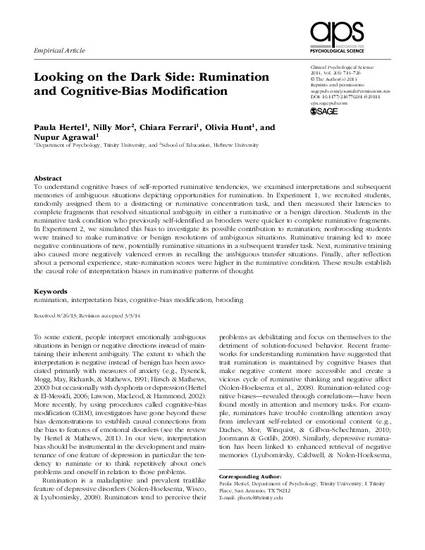
To understand cognitive bases of self-reported ruminative tendencies, we examined interpretations and subsequent memories of ambiguous situations depicting opportunities for rumination. In Experiment 1, we recruited students, randomly assigned them to a distracting or ruminative concentration task, and then measured their latencies to complete fragments that resolved situational ambiguity in either a ruminative or a benign direction. Students in the ruminative task condition who previously self-identified as brooders were quicker to complete ruminative fragments. In Experiment 2, we simulated this bias to investigate its possible contribution to rumination; nonbrooding students were trained to make ruminative or benign resolutions of ambiguous situations. Ruminative training led to more negative continuations of new, potentially ruminative situations in a subsequent transfer task. Next, ruminative training also caused more negatively valenced errors in recalling the ambiguous transfer situations. Finally, after reflection about a personal experience, state-rumination scores were higher in the ruminative condition. These results establish the causal role of interpretation biases in ruminative patterns of thought.
